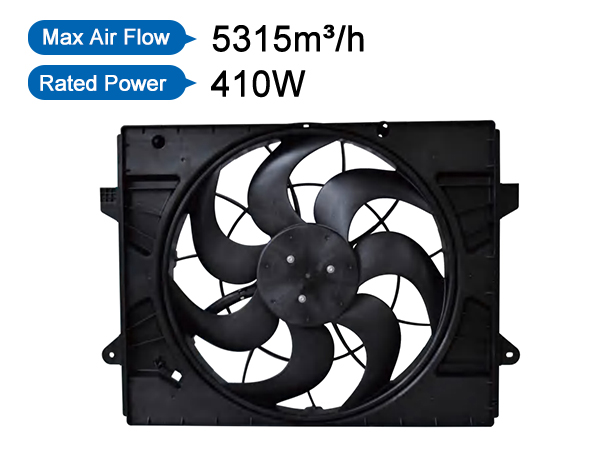Car fans not only bear the responsibility of heat dissipation, but also need to consider various factors such as energy consumption, noise control, and aerodynamic efficiency. Therefore, choosing the appropriate car fan is crucial for ensuring stable vehicle operation, improving fuel economy, and driving comfort. Here are some key steps and suggestions to help you make wise choices.

1. Understand vehicle requirements
Firstly, clarify your vehicle type (such as sedan, SUV, truck, etc.) and engine model. Different types of vehicles and engines have varying requirements for car fans. For example, high-performance sports cars may require larger and more efficient car fans to meet their high-intensity heat dissipation needs, while family sedans may focus more on fan quietness and energy efficiency.
2. Evaluate cooling system requirements
Evaluate the performance and efficiency of the current cooling system. Check whether the coolant circulation is smooth, whether the radiator is clean, and the performance of the original car fan. If the vehicle frequently operates under high-intensity conditions (such as long-term high-speed driving, towing heavy objects, etc.), higher performance car fans may be needed to ensure sufficient heat dissipation capacity.
3. Consider the type of car fan
Car fans are mainly divided into two categories: mechanical fans and electronic fans.
Mechanical fan: It is usually driven by the engine crankshaft through a belt, and the speed is proportional to the engine speed. They have a simple structure and low cost, but may cause unnecessary energy consumption under non high load conditions.
Electronic fan: driven by a motor, it can automatically adjust the speed according to the engine temperature, making it more efficient and energy-saving. Meanwhile, electronic fans can also implement more complex control strategies through programming, such as low-speed pre running to reduce wear during hot start.
4. Pay attention to the performance parameters of car fans
Wind volume and pressure: When selecting, it is necessary to consider the air volume and pressure that the car fan can generate to ensure sufficient heat dissipation capacity. The larger the air volume, the better the heat dissipation effect; The wind pressure determines the performance of the fan in overcoming resistance, such as the dense fins of the radiator.
Noise level: Low noise car fans can improve driving comfort, especially during long-distance driving.
Energy consumption and efficiency: Electronic fans have significant advantages in this regard, as they can adjust power according to actual needs and reduce unnecessary energy consumption.
5. Compatibility and Installation
Ensure that the selected car fan is perfectly compatible with your vehicle and engine. Check if the size, interface, power requirements, etc. of the fan match the existing configuration of the vehicle. At the same time, consider the convenience of installation and the possible modification work required.
6. Brand and Quality Assurance
Choosing products from well-known brands usually means higher quality assurance and more comprehensive after-sales service. Read user reviews and professional evaluations to understand the actual performance of the product.
In summary, selecting a suitable car fan requires comprehensive consideration of various factors such as vehicle requirements, cooling system performance, fan type, performance parameters, compatibility, brand quality, and future upgrade potential.
Address:No.30, Dapu lndustrial Street, Changping, Dongguan, Guangdong, China
Tel: +86-186 7628 8117